How to exploit batting weaknesses: Closed off stance
This is part of a series on How to exploit batsman's weaknesses. To see the other weaknesses click here.
A "closed off" stance is one of the easiest weaknesses to spot and exploit because the batsman reveals his hand before he has even faced a ball.
It's also very common in club cricket. At the level I play I see it every weekend at least once, especially with lower order and tail-end batsmen.
Being closed off is another way of saying the batsman is too sideways on when he takes his stance. This can be shown in either the feet or the shoulders like this:
Although this might look normal on first glace you can see the following technical points:
- The head is slightly too far to the off side and not over the toes
- The front shoulder is pointing towards mid off
Also, not shown in the picture, but often seen, is the front foot closer to the off side than the back foot, the opposite of an open stance, and so is called a closed stance.
Although the stance itself is not a weakness, it does lead to mistakes that you can exploit.
The closed off batsman gets his body in the way when playing on the leg side, meaning he finds it impossible to play straight on the leg side and ends up hitting across the line of balls that should be driven or flicked, as shown here:
front foot technical error: closed off
back foot technical error: closed off
It can also cause a secondary problem of tipping over.
Tipping over is where the batsman's weight falls to the off side and his body follows, meaning he or she is more likely to play at balls outside the off stump that should be left.
Option 1: Bowl outside off stump
The closed off batsman will favour the cover drive and on side square shots because it is very difficult for him to hit either straight or on the leg side.
Early in the innings you can combine his keenness to get going with a favoured cover drive with his lack of judgement of the off stump by bowling a 5th stump line:

Ideally this line will not be a standard length but either:
- Slightly pitched up encouraging onto the front foot to chase a wide one and nick off.
- Back of a length because the back foot movement means drives will be played away from the body and again bring slips and the keeper in for catches.
The field setting would depend on the game situation and the bowler but when varying from the standard remember:
- A square leg position is vital, probably just in front of square.
- Standard midwicket and mid on will have very little to do. You could hide bad fielders there, use them in close catching off side positions or have them in close for the leading edge.
- Deep midwicket should be in your mind despite the outside off line, especially with off spinners or inswing medium pacers. This is because the batsman may hit out in frustration.
- Place as many slips and gulley positions as you dare.
If the batsman hits a few boundaries and get his feet moving, don't persist with this line too much, perhaps only turning back to it as a variation.
Option 2: Bowl at the stumps and moving in
If you can move the ball in to this batsmen (swing, seam or turn) you can do two jobs in one:
- Dry up the runs by cutting off all scoring options except square or behind square on the leg side.
- Increase the chance of bowled or LBW as the batsman plays across the line of the ball in front of the stumps.
To do this, your target area (that is to say, where the ball is as it passes the stumps) is shown here:
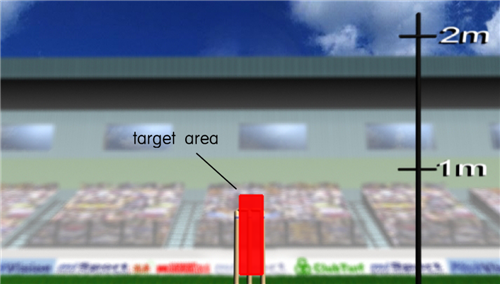
The length will depend on how much bounce you are getting. The aim should be to hit the stumps as you can't get many bowled or LBW decisions without that..
When the batsman does hit the ball on this line it will be in an area between forward square leg and fine leg:
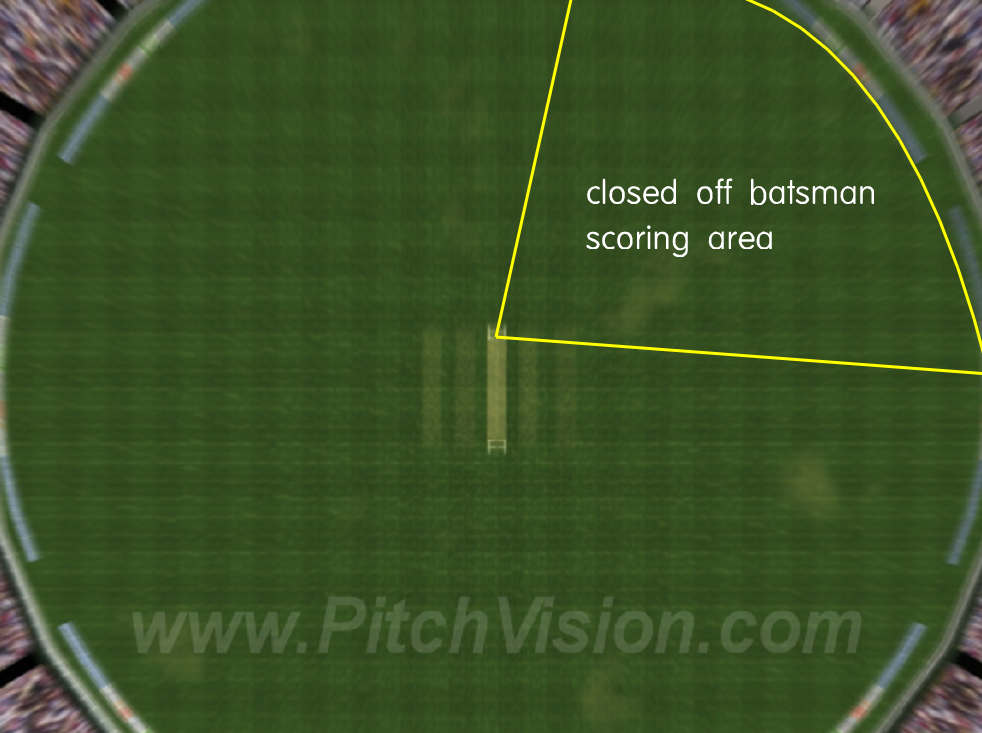
Set your field to cut off these shots and there will be nowhere to go.
As a variation (which in my view is underused) you can bowl around the wicket.
It might make it harder to get an LBW decision but bowled is still possible and it will tuck the batsmen up even more giving him even less room to score on the off side
There is also an option to bowl short on this line.
On a bouncier pitch with a faster bowler on, the closed off batsman will not be able to play the short ball well because he is playing around his body. That means bowling short and putting in leg side close catchers such as short leg or leg gulley.
Going around the wicket with a shorter length can also be used.
Want to improve your skills so you can bowl to these tactics or iron out your batting weaknesses? PitchVision Academy has an online coaching course to help you from the world's finest coaches.
- Login to post comments

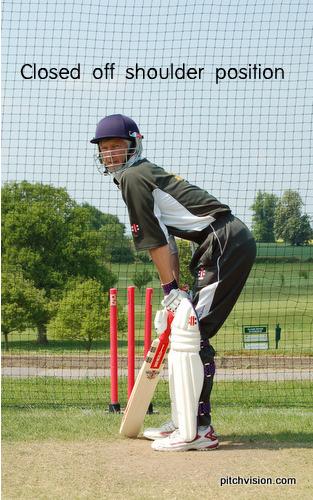
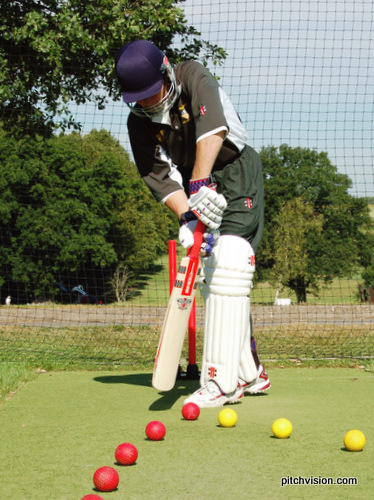
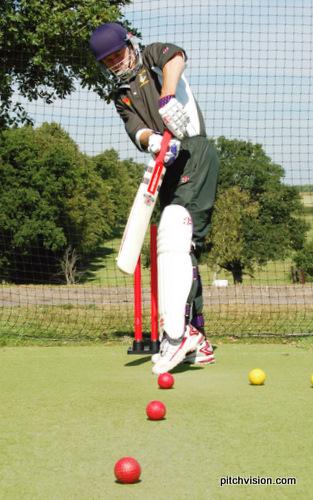

Comments
Hi
technically and verbally very detailed article, I will try to work on it.
Thank You
I love Pitch Vision and micricketcoach, I will now have to check myself when batting!! Time to sign up for the acadamy!!
Andy
Very kind of you Andrew, see you in there.
this is a really good info ...........i ll work on it
Hey David, I'm a leg-spinner. Can these tips be also used for me? Or do you have another article that I could read which is specifically for leg-spinners?
Yes they can be used for spinners.
Hi David
I have an habit of doing that and I think my stance is flawed. I play a lot of cover drives and very few flicks or on drives. I tend to be in a awkward position while flicking the ball to square leg. I often end up scooping the ball to somewhere between midwicket and mid on. This article is very relevant to me. Can you provide assistance on how to correct such a stance???
Your inputs will be appreciated
Best Regards
Gaurav